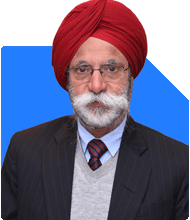60-Year-Old Retiree With 1.56 Crore Needs Rs 40,000 Monthly Income - How?
Ramalingam Kalirajan |8317 Answers |Ask -Follow
Mutual Funds, Financial Planning Expert - Answered on Mar 26, 2025
He has an MBA in finance from the University of Madras and is a certified financial planner.
He is the director and chief financial planner at Holistic Investment, a Chennai-based firm that offers financial planning and wealth management advice.... more

I am 60 yrs old and will retire in 2 months time. I have a EPF of 56 lacs and 1cr in equity. I don't have any other savings or income. I want a monthly income of Rs 40k from my investments. Please give your suggestions how can I achieve it. Regards Lal
Understanding Your Financial Needs
You require Rs. 40,000 per month, which amounts to Rs. 4.8 lakh per year.
Your total retirement savings are Rs. 1.56 crore.
The goal is to generate income without depleting your capital quickly.
You also need to consider inflation and longevity risks.
Your investments should provide both stability and growth to sustain you for the next 25-30 years.
Asset Allocation Strategy
A well-structured portfolio balances risk and return. You need both growth and safety.
Suggested allocation:
Equity Mutual Funds (40-50%) – For long-term wealth creation.
Debt Mutual Funds (30-40%) – For stability and income generation.
Senior Citizen Savings Scheme (SCSS) and RBI Floating Rate Bonds (10-15%) – For secure returns.
Liquid Funds or Bank FD (5-10%) – For emergency funds.
This allocation provides stability while ensuring capital growth.
Generating Rs. 40,000 Monthly Income
A structured withdrawal strategy can help maintain a steady cash flow.
Systematic Withdrawal Plan (SWP) from Debt Mutual Funds
Withdraw Rs. 20,000 per month.
Ensures stable cash flow while keeping taxes minimal.
Senior Citizen Savings Scheme (SCSS) and RBI Floating Rate Bonds
Provides quarterly interest payouts.
Can cover Rs. 10,000-15,000 per month.
Dividends from Equity Mutual Funds
Invest in dividend-paying funds for additional cash flow.
By combining these options, you can achieve Rs. 40,000 per month with minimal tax impact.
Importance of Equity Investments
Even in retirement, equity exposure is necessary for long-term growth.
Why Actively Managed Equity Funds?
They aim to generate higher returns than passive index funds.
Skilled fund managers adjust portfolios based on market conditions.
Index funds do not adapt to market risks, limiting growth potential.
Actively managed funds help in sustaining wealth over a long period.
Best Equity Fund Categories for Retirement
Flexicap Funds: Provide diversification across large, mid, and small-cap stocks.
Large & Midcap Funds: Balance between growth and stability.
Dividend Yield Funds: Generate periodic income while maintaining growth.
These funds help in long-term capital appreciation while managing risk.
Debt Investments for Stability
Debt instruments ensure regular income and capital safety.
Suitable Debt Options
Corporate Bond Funds: Offer better returns than bank FDs.
Short-Term Debt Funds: Provide stability with lower interest rate risk.
Government Bonds: Ideal for capital protection.
A mix of these options ensures predictable returns while preserving liquidity.
Emergency Fund Planning
Since you are retiring, having an emergency fund is critical.
Keep Rs. 5-10 lakh in liquid funds or fixed deposits.
Ensure easy access to cover unforeseen expenses.
This prevents the need to sell long-term investments in case of emergencies.
Tax Considerations
SWP withdrawals from debt funds are taxed based on holding period.
LTCG above Rs. 1.25 lakh on equity funds is taxed at 12.5%.
SCSS and RBI bonds interest is taxable as per income slab.
Planning withdrawals efficiently can reduce your tax liability.
Importance of Investing Through a Certified Financial Planner
A Certified Financial Planner (CFP) ensures professional fund selection.
Investing through a Mutual Fund Distributor (MFD) with CFP credentials provides expert guidance.
Direct mutual funds lack advisory support, leading to uninformed decisions.
A professional approach ensures that your retirement funds are managed efficiently.
Reviewing and Adjusting Your Portfolio
Review investments every six months.
Rebalance asset allocation based on market conditions.
Adjust withdrawals based on inflation.
Regular monitoring ensures your investments stay aligned with your financial needs.
Final Insights
Maintain a balance between income generation and long-term growth.
Diversification across equity and debt provides stability.
Tax-efficient withdrawal strategies help in maximizing returns.
Regular portfolio review ensures financial security throughout retirement.
By following this structured approach, you can generate a steady Rs. 40,000 per month while protecting your capital.
Best Regards,
K. Ramalingam, MBA, CFP
Chief Financial Planner
www.holisticinvestment.in
https://www.youtube.com/@HolisticInvestment
You may like to see similar questions and answers below
Ramalingam Kalirajan |8317 Answers |Ask -Follow
Mutual Funds, Financial Planning Expert - Answered on Apr 30, 2024
Ramalingam Kalirajan |8317 Answers |Ask -Follow
Mutual Funds, Financial Planning Expert - Answered on May 25, 2024
Ramalingam Kalirajan |8317 Answers |Ask -Follow
Mutual Funds, Financial Planning Expert - Answered on Jul 08, 2024
Dr Dipankar Dutta |1195 Answers |Ask -Follow
Tech Careers and Skill Development Expert - Answered on May 03, 2025
Dr Dipankar Dutta |1195 Answers |Ask -Follow
Tech Careers and Skill Development Expert - Answered on May 03, 2025
Radheshyam Zanwar |1591 Answers |Ask -Follow
MHT-CET, IIT-JEE, NEET-UG Expert - Answered on May 03, 2025
Dr Nagarajan Jsk |361 Answers |Ask -Follow
NEET, Medical, Pharmacy Careers - Answered on May 03, 2025
T S Khurana |461 Answers |Ask -Follow
Tax Expert - Answered on May 03, 2025
Kanchan Rai |583 Answers |Ask -Follow
Relationships Expert, Mind Coach - Answered on May 03, 2025
Kanchan Rai |583 Answers |Ask -Follow
Relationships Expert, Mind Coach - Answered on May 03, 2025
Prof Suvasish Mukhopadhyay |607 Answers |Ask -Follow
Career Counsellor - Answered on May 03, 2025
Prof Suvasish Mukhopadhyay |607 Answers |Ask -Follow
Career Counsellor - Answered on May 03, 2025
Milind Vadjikar |1205 Answers |Ask -Follow
Insurance, Stocks, MF, PF Expert - Answered on May 03, 2025

























